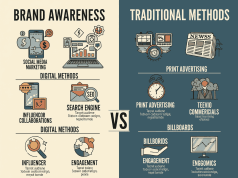Privacy Matters: How Changes in Data Regulations Are Affecting Programmatic Advertising
In recent years, the landscape of programmatic advertising has undergone significant transformation, largely driven by evolving data privacy regulations. These changes have not only reshaped how marketers approach targeting and data collection, but they have also redefined the relationship between consumers and brands. As businesses adapt to new legal frameworks, understanding these shifts is crucial for navigating the future of digital advertising.
The Background of Data Privacy Regulations
As businesses increasingly rely on consumer data to drive marketing strategies, incidents like the Cambridge Analytica scandal awakened public and governmental scrutiny surrounding data privacy. In response, legislators around the globe have instituted stricter privacy laws designed to protect consumer information. Notable regulations include:
- General Data Protection Regulation (GDPR) in the European Union: Enforced in 2018, GDPR mandates that companies obtain explicit consent before collecting personal data and gives consumers greater control over their information.
- California Consumer Privacy Act (CCPA): Effective from January 2020, CCPA grants California residents rights over their personal data, including the ability to opt out of its sale.
- Other State Regulations: Following California’s lead, states like Virginia and Colorado have introduced their own privacy laws, all aiming to enhance consumer rights.
The Impact on Programmatic Advertising
1. Data Collection and Consent Management
One of the most immediate impacts of these regulations has been the requirement for explicit user consent before gathering data. Programmatic advertising relies heavily on cookies and tracking mechanisms to target audiences effectively. However, with regulations like GDPR and CCPA now in effect:
- Opt-In Requirements: Advertisers must redesign their strategies to incorporate consent management platforms (CMPs), ensuring that data collection methods are compliant.
- Transparency: Brands must be transparent about their data usage and purposes. This shift places greater responsibility on advertisers to inform consumers clearly about how their data will be utilized.
2. Identity Resolution Challenges
The use of cookies has been a cornerstone of programmatic advertising, allowing marketers to track user behavior across multiple platforms. However, with browsers like Google Chrome shifting towards a cookieless future, advertisers face significant challenges in identity resolution.
- Alternative Solutions: Marketers are exploring alternatives like device fingerprinting, server-side tracking, and contextual advertising to adapt to this new landscape. However, these methods often come with their own compliance complexities.
- Increased Reliance on First-Party Data: Success will increasingly depend on first-party data—information collected directly from consumers. This promotes more meaningful and transparent relationships between brands and their customers.
3. Shifts in Targeting Strategies
As data regulation tightens, traditional targeting methods are becoming less viable.
- Contextual Targeting: This method focuses on placing ads based on the content being consumed rather than tracking individual user behavior. Companies are investing in contextual advertising to maintain relevance without infringing on privacy.
- Lookalike Audiences: Marketers are using first-party data to create lookalike models, targeting users with similar characteristics to existing customers without relying on third-party cookies, thus aligning with privacy standards.
The Role of Technology and Innovation
In this rapidly evolving environment, technology serves as both a challenge and an opportunity. Companies are increasingly turning to artificial intelligence and machine learning to enhance their programmatic capabilities while ensuring compliance with privacy regulations.
- Automation Tools: These can help streamline consent management and data analysis, allowing for more effective compliance without compromising campaign performance.
- Innovative Platforms: Some companies are developing privacy-first platforms that prioritize user consent and data protection while still offering robust advertising solutions.
The Importance of Building Trust
As data privacy regulations change the dynamics of programmatic advertising, brands must focus on building trust with consumers.
- Ethical Marketing: Advertisers must prioritize ethical marketing practices, emphasizing transparency and integrity in their data usage.
- Consumer Engagement: Engaging consumers through value-driven propositions can help foster loyalty, as users are more likely to share their data when they see tangible benefits in return.
Conclusion
The intersection of data privacy regulations and programmatic advertising presents both challenges and opportunities for marketers. As privacy laws evolve, advertisers must adapt by prioritizing transparent data practices and embracing innovative technologies. By building trust with consumers and focusing on ethical marketing practices, brands can navigate this shifting landscape while continuing to engage effectively with their audiences. As the digital world grows increasingly complex, a commitment to privacy and transparency will be the cornerstone of successful programmatic advertising strategies.









